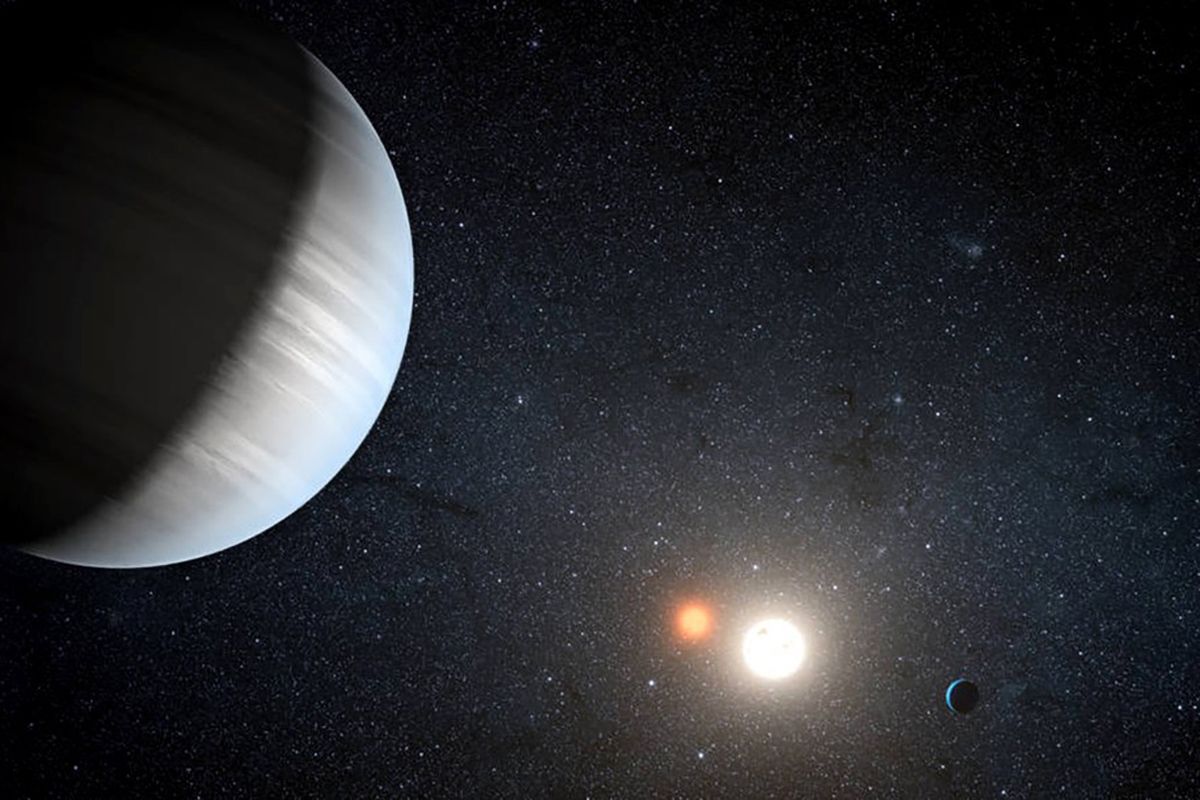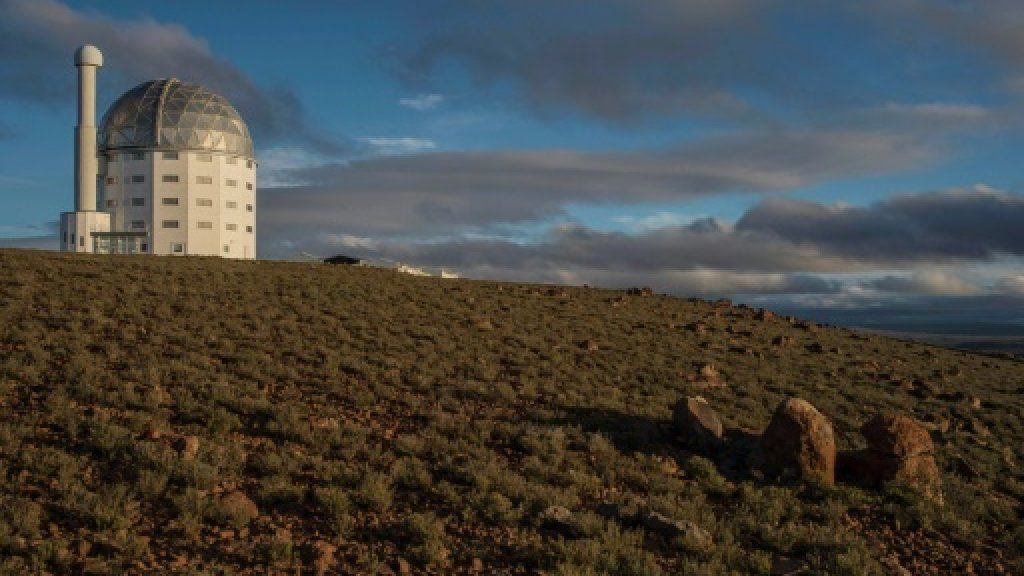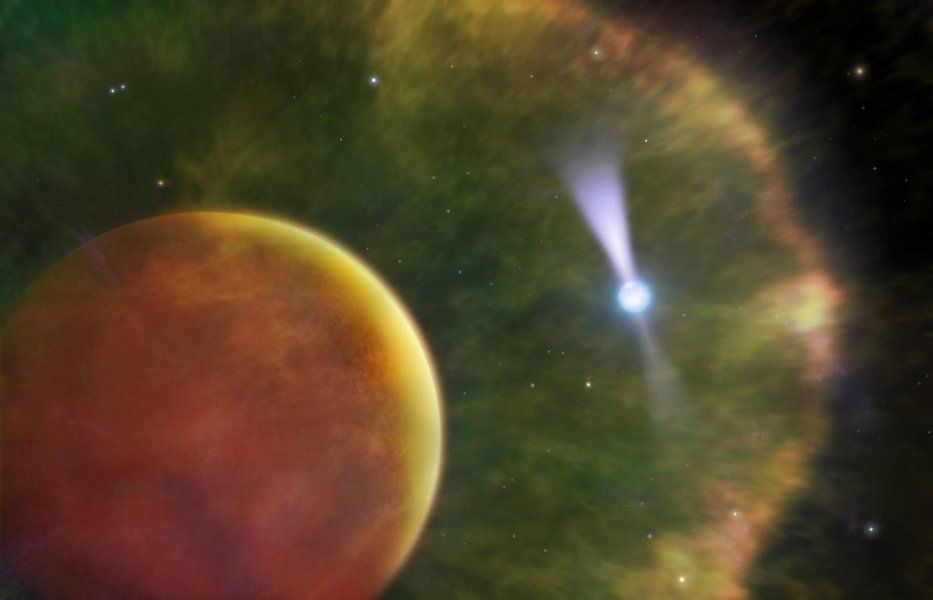Watch Earth change over the past 20 years, thanks to a compilation of NASA satellite footage.
Category: space – Page 1,020

New MeerLICHT Telescope Can Track Deep Space — Here’s How It Works
Throughout history, astronomers have used both optical and radio telescopes to see and hear the universe. Now, a new project will combine both kinds of telescopes to combine the two senses so that scientists can get a more complete look at the universe in real-time.
MeerLICHT — which is Dutch for “more light” — is a new, fully robotic telescope that uses a 65-centimeter main mirror and a 100-megapixel camera that was unveiled Friday near Sutherland, South Africa, which is a few hours northeast of Cape Town. What makes this telescope different is that it will be connected to MeerKAT, a radio telescope that consists of 64 dishes and located 125 miles away. Both telescopes will scan the Southern Sky in matching fields of view. The project will be the first of its kind and size to listen as well as see into space.

These Saturn Moons Look Like Ravioli
Saturn has ravioli-shaped moons, but they’re not as delicious as real ravioli. (via Seeker Universe)


In S.Africa, a unique telescope link-up scans deep space
Scientists in South Africa on Friday launched the world’s first optical telescope linked to a radio telescope, combining “eyes and ears” to try to unravel the secrets of the universe.
The device forms part of the Square Kilometre Array (SKA) project in the remote Karoo desert, which will be the world’s most powerful radio telescope system.
The latest move combines the new optical telescope MeerLITCH — Dutch for ‘more light’ — with the recently-completed 64-dish MeerKAT radio telescope, located 200 kilometres (125 miles) away.

Ignore the hype over big tech. Its products are mostly useless
Despite this, a regular ritual of hype and hysteria is now built into the news cycle. Every now and again, at some huge auditorium, a senior staff member at one of the big firms based in northern California – ordinarily a man – will take the stage dressed in box-fresh casualwear, and inform the gathered multitudes of some hitherto unimagined leap forward, supposedly destined to transform millions of lives. (There will be whoops and gasps in response, and a splurge of media coverage – before, in the wider world, a palpable feeling of anticlimax sets in.)
It’s years since Silicon Valley gave us a game-changer. Instead, from curing disease to colonies on Mars, we’re fed overblown promises, says Guardian columnist John Harris.


Beams of antimatter spotted blasting towards the ground in hurricanes
Although Hurricane Patricia was one of the most powerful storms ever recorded, that didn’t stop the National Oceanic and Atmospheric Administration (NOAA) from flying a scientific aircraft right through it. Now, the researchers have reported their findings, including the detection of a beam of antimatter being blasted towards the ground, accompanied by flashes of x-rays and gamma rays.
Scientists discovered terrestrial gamma-ray flashes (TGFs) in 1994, when orbiting instruments designed to detect deep space gamma ray bursts noticed signals coming from Earth. These were later linked to storms, and after thousands of subsequent observations have come to be seen as normal parts of lightning strikes.
The mechanisms behind these emissions are still shrouded in mystery, but the basic story goes that, first, the strong electric fields in thunderstorms cause electrons to accelerate to almost the speed of light. As these high-energy electrons scatter off other atoms in the air, they accelerate other electrons, quickly creating an avalanche of what are known as “relativistic” electrons.

Orbits of Jupiter Moons Transformed into Mind-Bending Optical Illusions and Music
System-sounds.com converts the orbits of Jupiter moons Io, Europa, Ganymede and Calisto into a mind-bending visual and audio experience.